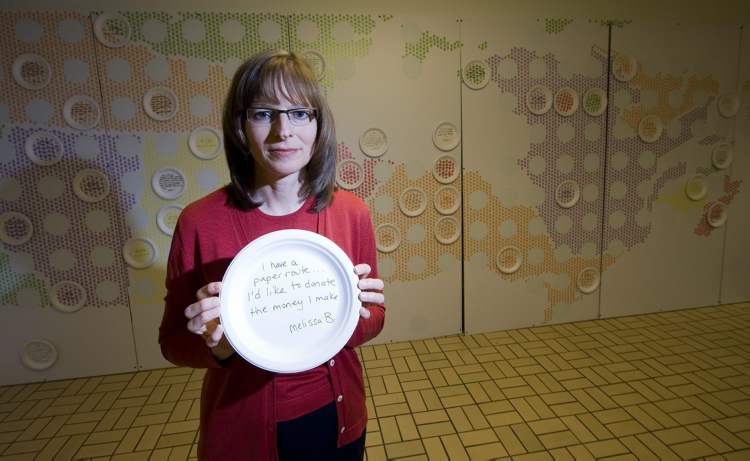Local food bank use soars
Manitoba increase greatest in Canada
Advertisement
Read this article for free:
or
Already have an account? Log in here »
To continue reading, please subscribe:
Monthly Digital Subscription
$1 per week for 24 weeks*
- Enjoy unlimited reading on winnipegfreepress.com
- Read the E-Edition, our digital replica newspaper
- Access News Break, our award-winning app
- Play interactive puzzles
*Billed as $4.00 plus GST every four weeks. After 24 weeks, price increases to the regular rate of $19.00 plus GST every four weeks. Offer available to new and qualified returning subscribers only. Cancel any time.
Monthly Digital Subscription
$4.75/week*
- Enjoy unlimited reading on winnipegfreepress.com
- Read the E-Edition, our digital replica newspaper
- Access News Break, our award-winning app
- Play interactive puzzles
*Billed as $19 plus GST every four weeks. Cancel any time.
To continue reading, please subscribe:
Add Free Press access to your Brandon Sun subscription for only an additional
$1 for the first 4 weeks*
*Your next subscription payment will increase by $1.00 and you will be charged $16.99 plus GST for four weeks. After four weeks, your payment will increase to $23.99 plus GST every four weeks.
Read unlimited articles for free today:
or
Already have an account? Log in here »
Hey there, time traveller!
This article was published 30/10/2012 (4737 days ago), so information in it may no longer be current.
OTTAWA — Food bank use in Manitoba has grown faster than in any other province in the last year, a new report to be released today will show.
HungerCount 2012, the annual report on food bank use from Food Banks Canada, says food bank use nationally grew 2.4 per cent between 2011 and 2012 and 30.6 per cent since the recession hit in 2008.
“We were hopeful that we’d start to see things level off, but that’s not the case,” said Katharine Schmidt, Food Banks Canada’s executive director.

Manitoba food bank use increased sharply — 63,482 people used a food bank in March 2012, up 14.2 per cent since March 2011. The number of users is up 56.9 per cent since 2008.
No other province was close to that kind of jump in the last year. P.E.I. was second, with a 10 per cent increase. Alberta, Saskatchewan, Quebec, Newfoundland and the territories saw food bank use drop in the last year.
Alberta did see a higher jump in use since 2008 than Manitoba, with the number of users up 59.4 per cent. But the number of users dropped nearly nine per cent in 2012.
More than five per cent of Manitobans used a food bank in March 2012, higher than every other province but Newfoundland. However, Newfoundland, where 5.63 per cent of residents used a food bank in March, has seen a 10 per cent drop in food bank use in the last decade, including an annual drop of 5.6 per cent in 2012.
The report notes a correlation between the unemployment rate and food bank use. However, in Manitoba, that correlation doesn’t necessarily apply. Manitoba’s unemployment rate has risen, from 4.2 per cent in 2008 to about five per cent in 2012, but it dropped slightly between 2011 and 2012, while food bank use increased.
Manitoba also has one of the lowest unemployment rates in Canada, far below the national average of 7.9 per cent in September, yet it has almost the highest per capita rate of food bank use.
Nearly half the food bank users in Manitoba are children, compared to 38 per cent nationally. In Manitoba, 26 per cent of food bank users live in two-parent families, 22.7 per cent are from single-parent families, and 36 per cent are single people. About three per cent are seniors and four per cent are immigrants. Half receive social assistance.
Almost half the users of food banks in rural Manitoba are aboriginal. The figure was not available for the entire province.
Food Banks Canada calls for increased investment in affordable housing, improvements to income supplements for seniors and better social-assistance programs to help reduce reliance on food banks.
— with files from The Canadian Press
mia.rabson@freepress.mb.ca




